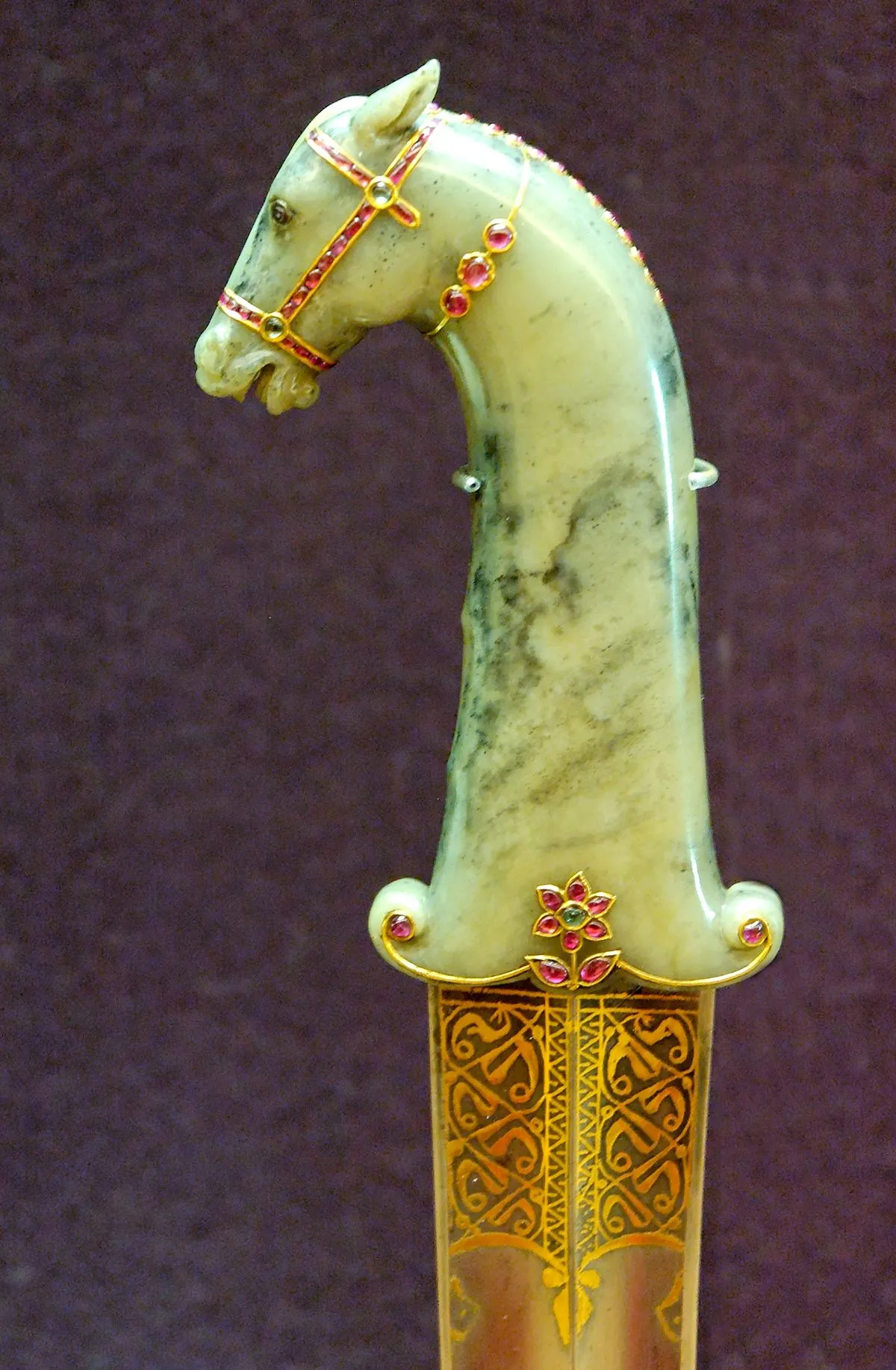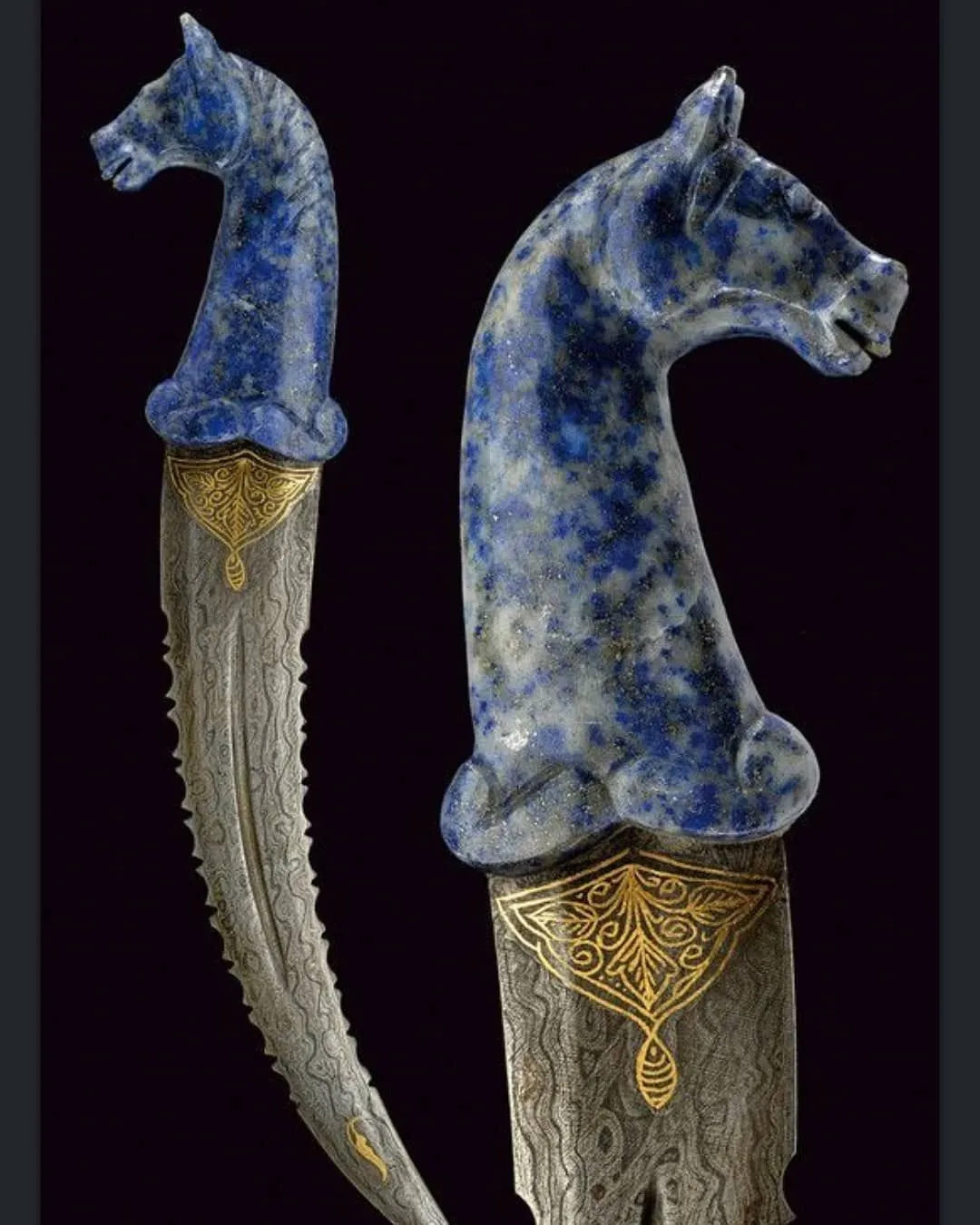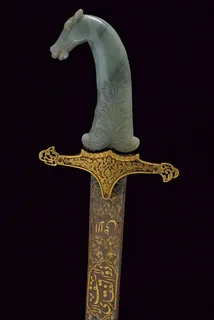Persian Dagger’s Elegance: 19th-Century Craftsmanship
In the realm of exquisite artifacts, few pieces rival the sheer beauty and historical significance of the Horse Handle Lapis Lazuli Dagger. This extraordinary weapon, a fine example of Persian craftsmanship from the 19th century, epitomizes the opulence and artistry of its era. Now a treasured part of the Al-Sabah Collection in Kuwait, this dagger offers a glimpse into the rich heritage of Persian art and the skill of its artisans.

The dagger’s most mesmerizing feature is its handle, meticulously carved in the shape of a horse’s head. This sculptural handle is crafted from lapis lazuli, a semi-precious stone renowned for its deep, celestial blue color. Lapis lazuli was highly valued in ancient Persia, not only for its striking hue but also for its rarity and symbolic significance. The choice of this stone for the handle underscores the dagger’s luxurious nature and the importance of artistic detail in Persian culture.
The horse’s head handle is not merely ornamental but also a symbol of power and nobility. Horses held a revered place in Persian society, often associated with prestige and grandeur. By incorporating this motif into the dagger, the artisans paid homage to the significance of the horse in Persian heritage while simultaneously showcasing their exceptional skill in working with lapis lazuli.

The blade of the khanjar, too, is a testament to the meticulous craftsmanship of the era. It is adorned with intricate engravings and designs that reflect the complex artistry of Persian metalwork. The combination of the detailed blade and the ornamental handle demonstrates the fusion of functionality and artistry that characterized 19th-century Persian weaponry. Each engraving and curve on the blade is executed with precision, highlighting the dagger’s role not just as a weapon but as a piece of art.
The Persian khanjar was more than just a tool of warfare; it was a statement of status and artistry. The detailed work on this particular piece indicates that it was likely created for someone of high rank, possibly a noble or a prominent figure, who valued both its practical use and its aesthetic appeal.
Today, the Horse Handle Lapis Lazuli Dagger is part of the prestigious Al-Sabah Collection in Kuwait, where it stands as a testament to the rich cultural and artistic heritage of Persia. The collection itself is renowned for its remarkable array of historical artifacts, and this dagger is a standout example of the skill and creativity that defined Persian artistry in the 19th century.

As visitors to the Al-Sabah Collection gaze upon this breathtaking piece, they are not merely viewing a weapon but are connecting with a rich history of craftsmanship and culture. The Horse Handle Lapis Lazuli Dagger remains a lasting symbol of the splendor and sophistication of Persian art, capturing the imagination of all who encounter it.






